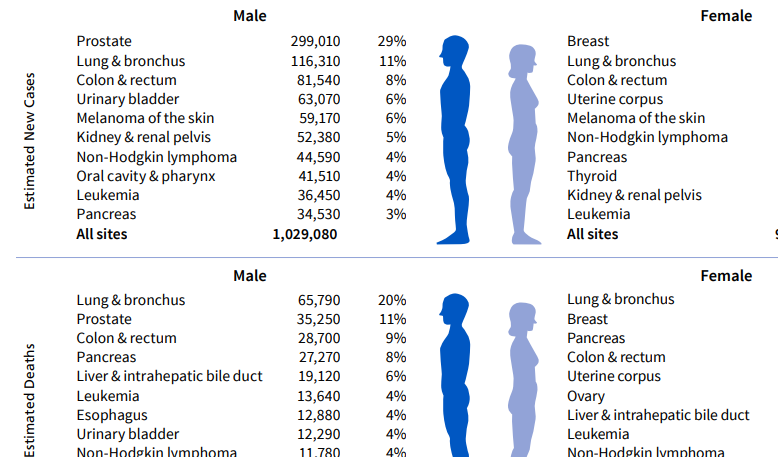New research suggests that the United States is anticipated to witness a milestone in cancer cases, exceeding 2 million for the first time in 2024. The study also highlights a shift in age patterns among cancer patients and a concerning rise in overall cancer incidence among individuals under the age of 50. According to the latest statistical report from the American Cancer Society released on Wednesday, the country has experienced a commendable 33% reduction in its cancer mortality rate from 1991 through 2021, equivalent to an estimated 4.1 million fewer cancer-related deaths. This decline is attributed to advancements in disease management, enhanced detection methods, and reductions in smoking.
Despite this progress, the research underscores challenges posed by increasing rates of certain common cancers. For instance, the report notes a continuous annual rise of approximately 0.6% in the incidence rate of female breast cancer since the mid-2000s, projecting over 313,000 new cases in 2024. Prostate cancer incidence has rebounded by about 3% annually after a nearly 40% drop from 2007 to 2014. Concerns are also raised about increases in endometrial and pancreatic cancers. The overall projection for 2024 indicates 2,001,140 new cancer cases and 611,720 cancer-related deaths in the U.S.
State-wise projections range from 3,320 in Wyoming to 193,880 in California, with varying rates per 1,000 population. Rebecca Siegel, the lead author of the report and senior scientific director of surveillance research for the American Cancer Society, expressed encouragement for the drop in cancer mortality but voiced concerns about increasing incidence in common cancers. The report further notes a changing trend in the age distribution of cancer patients, with a rising proportion of new diagnoses occurring in individuals aged 50 to 64 and a decline in those 65 and older.
Additionally, the report highlights a drop in cancer diagnoses among people under 50, coinciding with their shrinking share of the population. However, this age group witnessed an overall increase in cancer incidence from 1995 to 2020, notably with colorectal cancer becoming a leading cause of cancer death. Dr. Ahmedin Jemal, senior vice president of surveillance and health equity science at the American Cancer Society, expressed alarm at the sharp rise in colorectal cancer in younger Americans, emphasizing the need for increased screening and research to understand underlying reasons.
The report emphasizes racial disparities in cancer occurrence, particularly noting the extraordinary burden of prostate cancer among Black men. Structural racism is identified as a major factor contributing to these disparities, resulting in longstanding inequalities in wealth, exposure to risk factors, and access to quality cancer prevention and treatment. Lisa Lacasse, president of the American Cancer Society Cancer Action Network, underscores the need for policies addressing disparities and calls for increased support for health insurance coverage, access to care, and funding for cancer research and screening programs.
https://www.census.gov/data/tables/time-series/demo/popest/2020s-state-total.html

